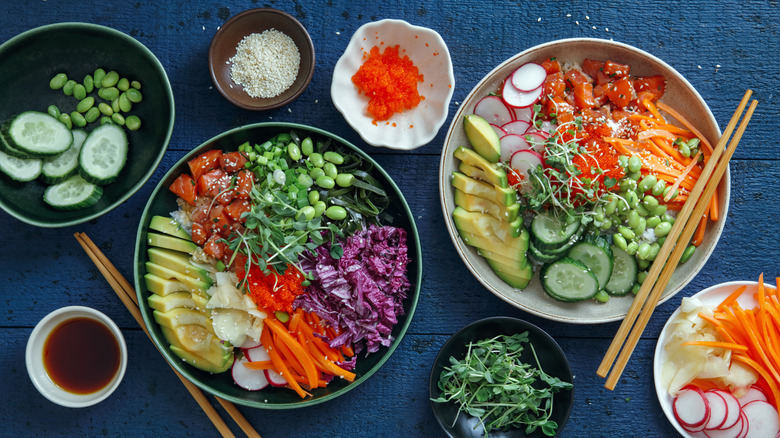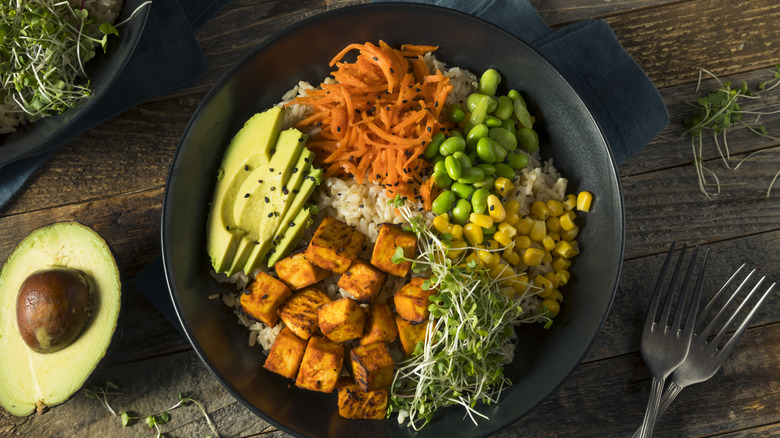Construction Is Key To A Rice Bowl That's Delicious With Each Bite
Rice bowls are fashionable meal trends because they encompass any ingredient, garnish, and condiment under the sun and are completely customizable. They come together quickly with whatever you have on hand and often blend cooked and raw ingredients into one texturally varied and flavorfully exciting meal.
One key to a rice bowl's deliciousness lies in its construction. You want to arrange the multiple ingredients and plan their combinations carefully to maximize flavors, textures, and compatibility as a cohesive meal. As its name implies, a rice bowl's constant and foundational ingredient is rice. Consequently, rice is the starting point of your bowl's construction.
After spreading a portion of rice at the bottom of the bowl, the following layer should consist of cooked vegetables, beans, or another hefty protein such as chicken, tofu, or perhaps marinated tuna. The rice foundation will soak up any juices, oils, or broths, efficiently infusing it with flavor. Once you've added the hearty cooked ingredients, you can layer on the colorful, lighter toppings like raw vegetables, fresh herbs, pickled vegetables, seeds, and dried fruit. The piece de resistance to tie everything together is the finishing drizzle of your favorite sauce, salad dressing, or condiment.
You could arrange each layer vertically, or place each ingredient in separate sections in a circle around the bowl. By placing the rice at the bottom of the encircling veggies, proteins, and garnishes, you get rice in every bite. The compartmentalized arrangement is the most attractive presentation revealing every ingredient on the menu.
Rice bowl proportion and preparation
For a well-rounded nutrient-rich meal, the consensus is that your rice bowl should contain equal portions of rice, protein, and veggies. You don't want it to be overly heavy on the rice. In a rice bowl with multiple vegetables and proteins, you can allocate an equal portion of each vegetable and protein by using measuring cups or spoons. For example, for every cup of rice, you could add a fourth cup each of cooked broccoli, shredded cabbage, julienned carrots, and roasted butternut squash along with a half-cup of garbanzo beans and a soft-boiled egg.
Even if you're not a stickler for measurements, it's easy enough to divvy up the ingredients by sight. While placing rice at the bottom ensures you'll get a bit in every bite, you can also sample all the ingredients in every spoonful by tossing the toppings and sauce into a salad mixture once it's served.
Diversify your weekly meals by creating numerous bowl recipes, using various combinations of veggies, proteins, and garnishes. A good rule of thumb is to prep things ahead: Boil a large portion of rice or various rice varieties, make or buy a couple of different sauces or salad dressings, chop or grate a bunch of fresh vegetables, and roast some vegetables to mix and match over the week. You could separate the rice into portions, seasoning each with fresh herbs and aromatics to diversify the flavors and global culinary influences in each bowl.

